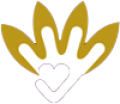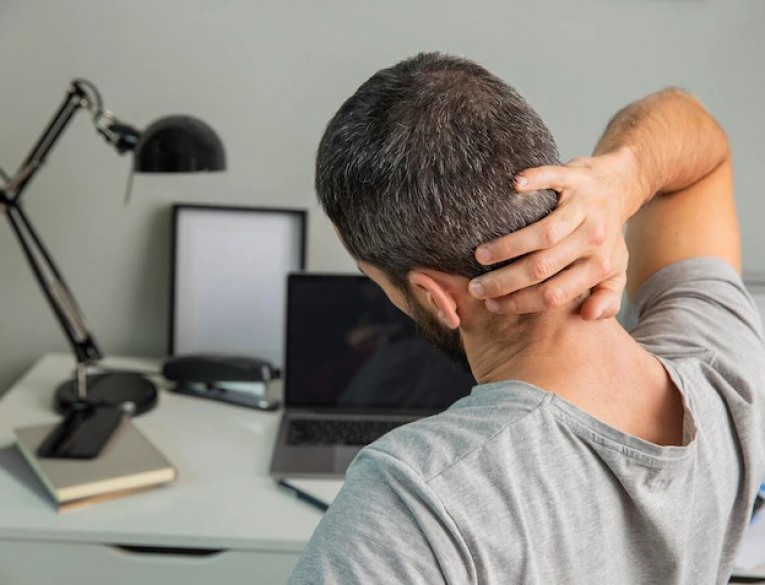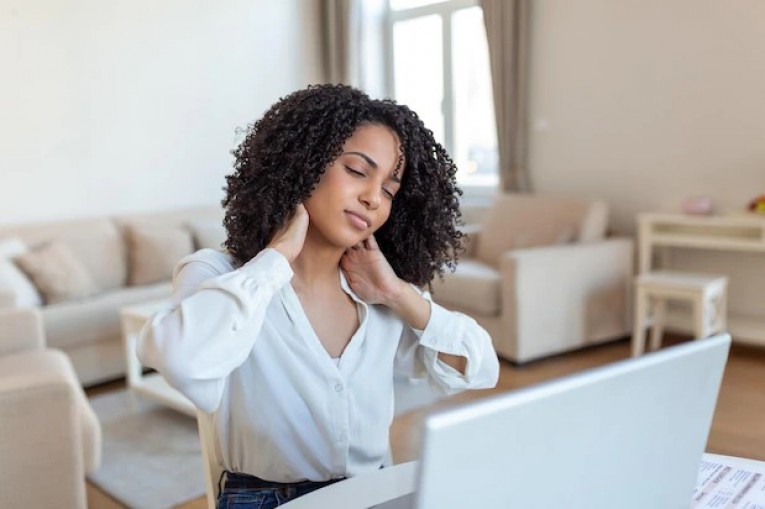Our neck and shoulders contain many flexible muscles and ligaments that support the weight of our head and function of your neck. These muscles can be injured and irritated by accidents, overuse, and poor posture.
Tension and tightness in your neck and shoulders are a common symptom of stress and anxiety. It's part of our body's way of gearing up to survive a perceived physical threat. It’s part of our “fight or flight” stress response.
Poor posture has also been proven to increase neck pain by straining muscles and ligaments that support our neck. As we are increasingly working at computers and on devices this can be a significant contributing factor.
Forward posture of our head increases the workload for many of our muscles and ligaments attached to the cervical spine. Over time, this can lead to muscle imbalances and ligamentous weakness as our body tries to adapt and find efficient ways to hold our head up for straight-ahead vision. Some muscles become elongated and weakened, whereas other muscles become shorter and tighter.
5 ways to help relieve tension in our neck and shoulders;
- Manual therapy such as osteopathy, can remove restrictions to movement and function which in turn reduces pain and dysfunction. Your osteopath can prescribe strengthening and stretching exercises to help prevent these issues returning,
- Yoga is a physical activity that incorporates stretches, poses, focus, and meditative breathing. Like manual therapy, it can improve range of motion and strength of the neck and shoulders,
- Gentle neck stretches,
- Take a break from devices. Microbreaks have been shown to make a significant difference, so this doesn’t need to be onerous,
- Apply heat to improve circulation to the soft tissues of the region, this will temporarily relieve tension and soreness.
Osteopaths can use a wide range of gentle techniques to reduce the muscular tension in your neck and increase movement in the joints of the neck and upper-back. A popular method is to gently massage the soft tissues in the joints to release tension, or to gently mobilise the joints to improve movement. The aim is to;
- reduce pain
- restore function
- prevent further episodes of neck pain through postural advice and exercise prescription.
Back to blog

